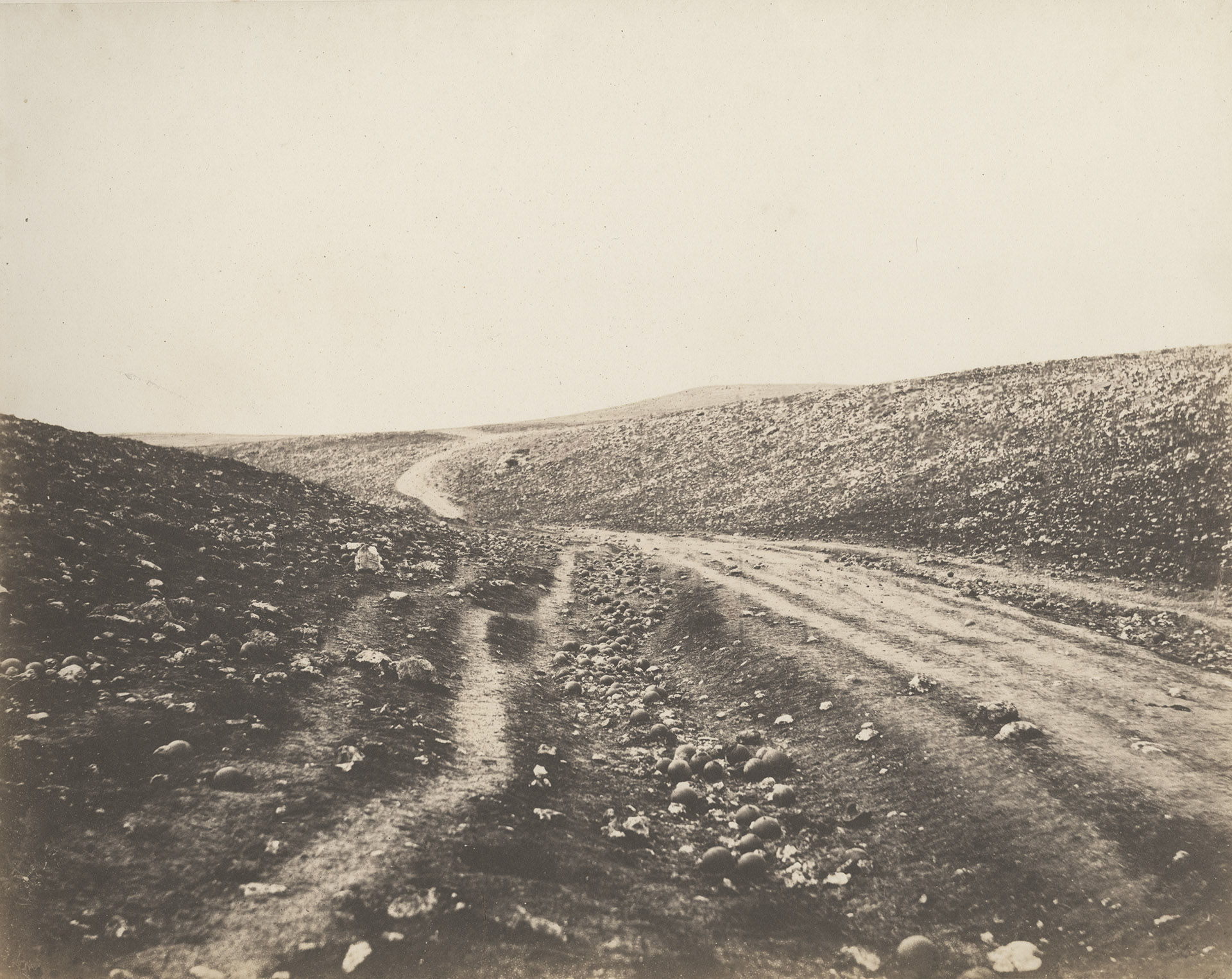Yani Tan
Media Art
2018.Sep.27
This essay is writing about Roger Fenton, he was a British photographer, noted as one of the first war photographers. Fenton trained as a painter in London and Paris before pursuing photography. He founded the Photographic Society in London and gained notoriety taking pictures of the British monarchy.
For his early life, he was born in Crimble Hall, Rochdale, Lancashire, on 28 March 1819. In 1838 Fenton went to the University of Oxford where he graduated in 1840 with a "first class" Bachelor of Arts degree, having read English, mathematics, Greek and Latin. In 1841, he began to read law at University College, evidently sporadically as he did not qualify as a lawyer until 1847, partly because he had become interested in learning to be a painter. In 1849, 1850 and 1851 he exhibited paintings in the annual exhibitions of the Royal Academy. His published call for the setting up of a photographic society was answered in 1853 with the establishment of the Photographic Society, with Fenton as founder and first Secretary.

Due to the size and cumbersome nature of his photographic equipment, Fenton was limited in his choice of motifs. Because the photographic material of his time needed long exposures, he was only able to produce pictures of stationary objects, mostly posed pictures; he avoided taking pictures of dead, injured or mutilated soldiers. An exhibition of 312 prints was soon on show in London and at various places across the nation in the months that followed. Fenton also showed them to Queen Victoria and Prince Albert and also to Emperor Napoleon III in Paris. Nevertheless, sales were not as good as expected.


Versions of Valley of the Shadow of Death, with and without cannonballs
Until then, the general public learned of battles through heroic paintings and illustrations. But after the British photographer Roger Fenton landed in 1855 on that far-off peninsula on the Black Sea, he sent back revelatory views of the conflict that firmly established the tradition of war photography.

Marcus Sparling seated on Fenton's photographic van, Crimea, 1855.

Cossack Bay, Balaklava, 1855

Hunter and his Entourage in Balmoral, 1856

Officers of the 71st Highlanders, 1856

Sturdy Cannon and Fortifications, Crimea

A gentleman in Eastern Costume with Nubian Model, 1858

Orientalist Study of a Woman, 1858

The Billiard Room, Mentmore, 1858

Roger Fenton in Volunteer's Uniform, 1860

Interior- Tintern Abbey, c. 1862
Those are the famous pictures which are Roger Fenton took when he alive. This is his life when he alive and the story happened to him.
sources:
https://en.wikipedia.org/wiki/Roger_Fenton
https://lens.blogs.nytimes.com/2018/01/18/roger-fenton-the-first-great-war-photographer/
http://100photos.time.com/photos/roger-fenton-valley-shadow-death
sources:
https://en.wikipedia.org/wiki/Roger_Fenton
https://lens.blogs.nytimes.com/2018/01/18/roger-fenton-the-first-great-war-photographer/
http://100photos.time.com/photos/roger-fenton-valley-shadow-death
没有评论:
发表评论
注意:只有此博客的成员才能发布评论。